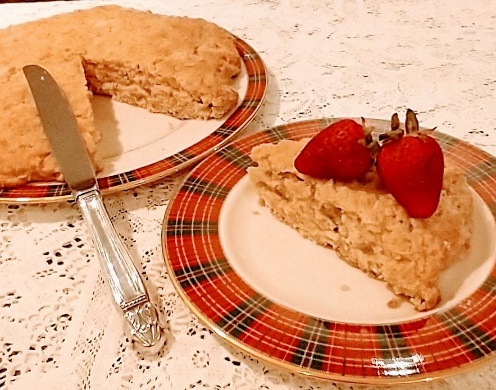Carolyn McDonald Graf
Cape Breton Island is off the eastern coast of North America and is part of the Canadian province of Nova Scotia. It is composed mainly of rocky shores, rolling farmland, glacial valleys, barren headlands, mountains, woods and plateaus. Geological evidence suggests that at least part of the island was originally joined with present-day Scotland and Norway, now separated by millions of years of continental drift.1
Cape Breton Island’s first residents were likely maritime natives, ancestors of the Mi’kmaq people. These peoples and their descendants inhabited the island (known as Unama’ki) for several thousand years and continue to live there to this day. Their traditional lifestyle centered on hunting and fishing because of the unfavorable agricultural conditions of their maritime home.
The local Mi’kmaq peoples began trading with European fishermen when the fishermen began landing in their territories as early as the 1520s. Over the next two centuries the Portuguese, French, Scots and English attempted to settle on Cape Breton.
The first permanently settled Scottish community on Cape Breton Island was Judique, settled in 1775 by Michael Mor MacDonald. He spent his first winter using his upside-down boat for shelter, which is reflected in the architecture of the village’s Community Centre. He composed a song about the area called “O ‘s àlainn an t-àite”, or “O, Fair is the Place.”2
Between 1773 and 1850, tens of thousands of Gaels made the journey across the Atlantic Ocean to settle in Eastern Nova Scotia and Cape Breton. This immigration was a result of changes in the Scottish culture, and the Highland clearances. The immigrants tended to settle amongst their own kinship groups – people who came from a particular area of Scotland, sharing similar traditions, dialects and beliefs. For instance, large areas around the Bras d’Or lakes, were settled by people from the Island of Barra and the Gaelic spoken today in that region of Cape Breton still closely resembles the Gaelic spoken on Barra.3 They brought with them a common culture of poetry, traditional songs and tales, music and dance, and used this to develop distinctive local traditions.
These cultural traditions continue today. The recipe below is included among them.
Cape Breton Afternoon Tea Bannock

“At my Aunt Annie’s Vermont home it was always time for tea – upon rising, for breakfast, at eleven, in mid-afternoon, before retiring, and whenever a visitor dropped in. A guest at the doorstep was but another excuse for brewing a fresh pot of that warming beverage so beloved by the Scots. With the cups of strong tea, my aunt served her favorite breads, especially this mildly sweet, soft, and relatively thick bannock from her Cape Breton homeland.”
Ingredients
- 2 cups all-purpose flour
- 1 cup old fashioned rolled oats
- 1/3 cup light brown sugar
- 1 tablespoon baking powder
- ½ teaspoon baking soda
- ¾ teaspoon salt
- ½ cup (one stick) unsalted butter, cold and diced
- 1 large egg, beaten
- About 2/3 cup buttermilk
- Two tablespoons unsalted butter, melted for topping
Preheat oven to 400. Lightly flour the center of a baking sheet.
In a large bowl, combine the flour oats, sugar, baking powder, baking soda, and salt. With a pastry blender, cut in ½ cup butter until mixture is uniformly crumbly.
In a small bowl, whisk the egg and buttermilk. Add to dry ingredients, stirring until well blended to make a soft and moist dough, adding more buttermilk, if needed. Gather to form a ball. Place in center of prepared baking sheet. With floured hands, shape into a 10 inch round about ½ inch thick. Bake in preheated oven until evenly browned and a tester inserted into the center comes out clean, about 18 minutes. Remove to a wire rack. While still warm, brush the top with melted butter. Serve warm or at room temperature, cut into wedges with butter and marmalade. Makes one round loaf, 8 to ten servings.(4)
Sources
- https://www.mackilts.com/made_in_cape_breton_island_new_scotland__nova_scotia.htm
- https://en.wikipedia.org/wiki/Cape_Breton_Island
- https://museum.novascotia.ca/resources/gaels/gaelic-immigration-nova-scotia
- The Scottish-Irish Pub and Hearth Cookbook, Kay Shaw Nelson, 1999, Hippocrene Books, Inc. New York, NY 10016, pp.173, 174.

